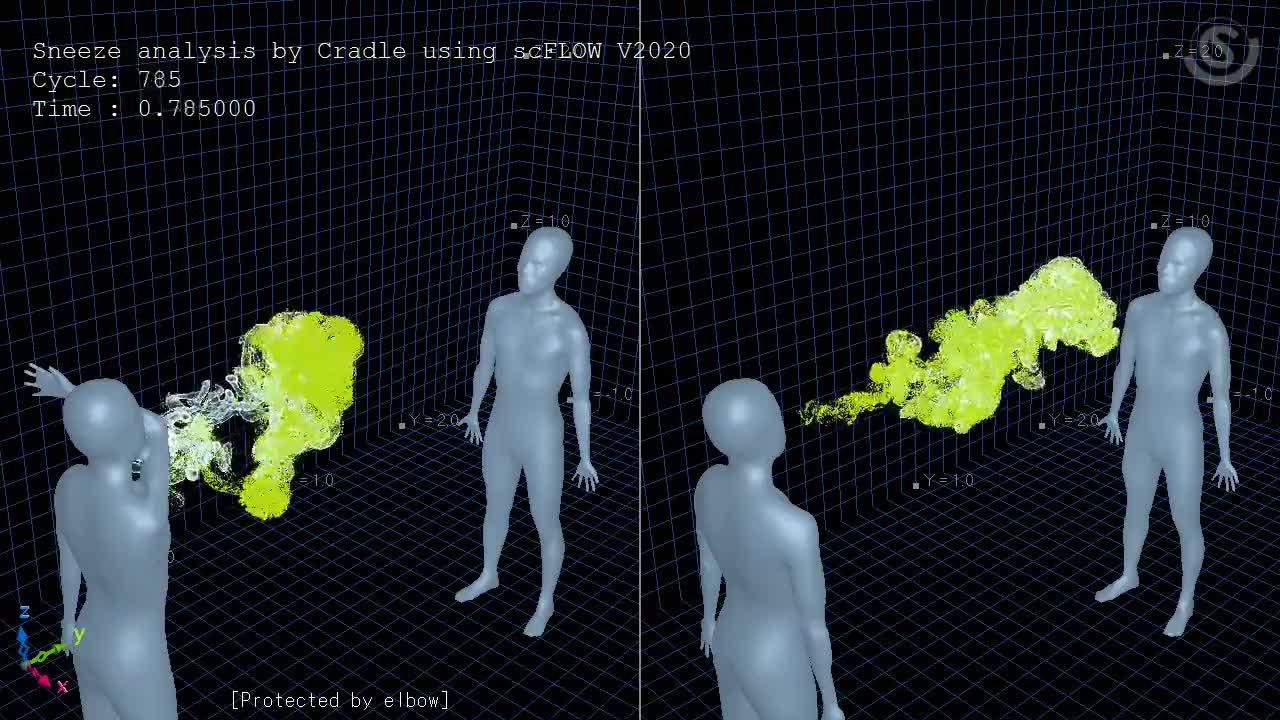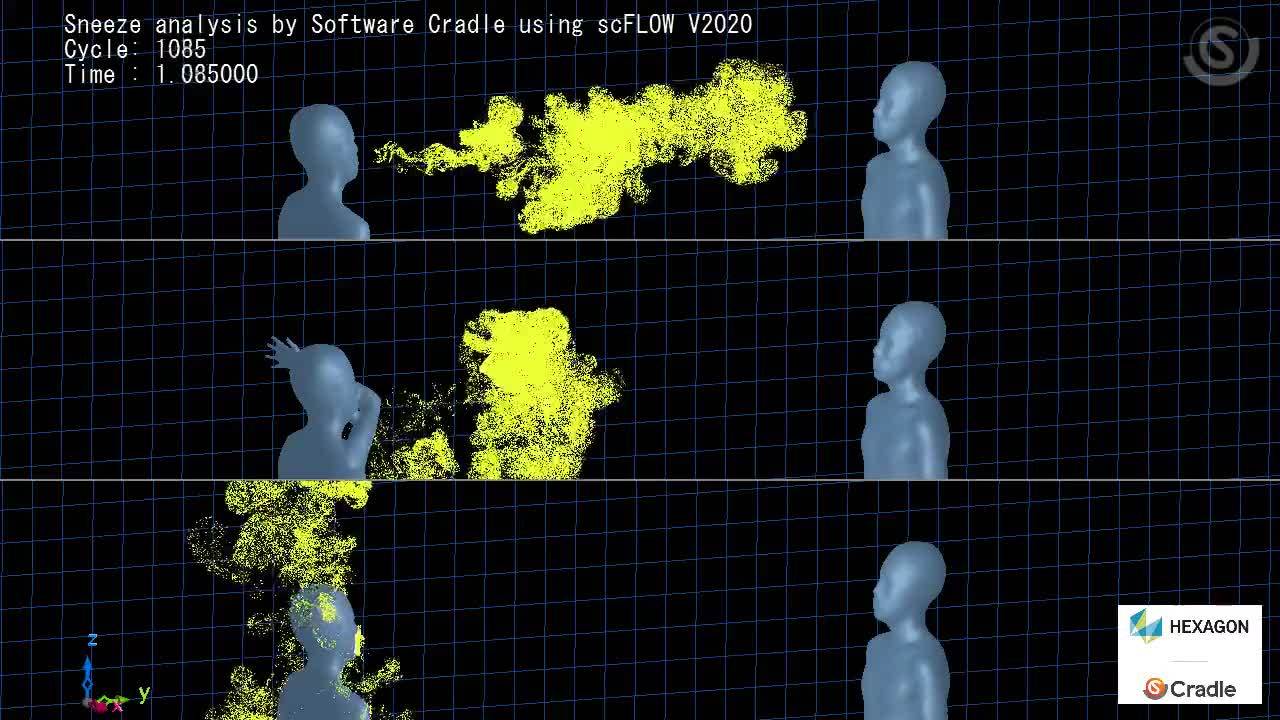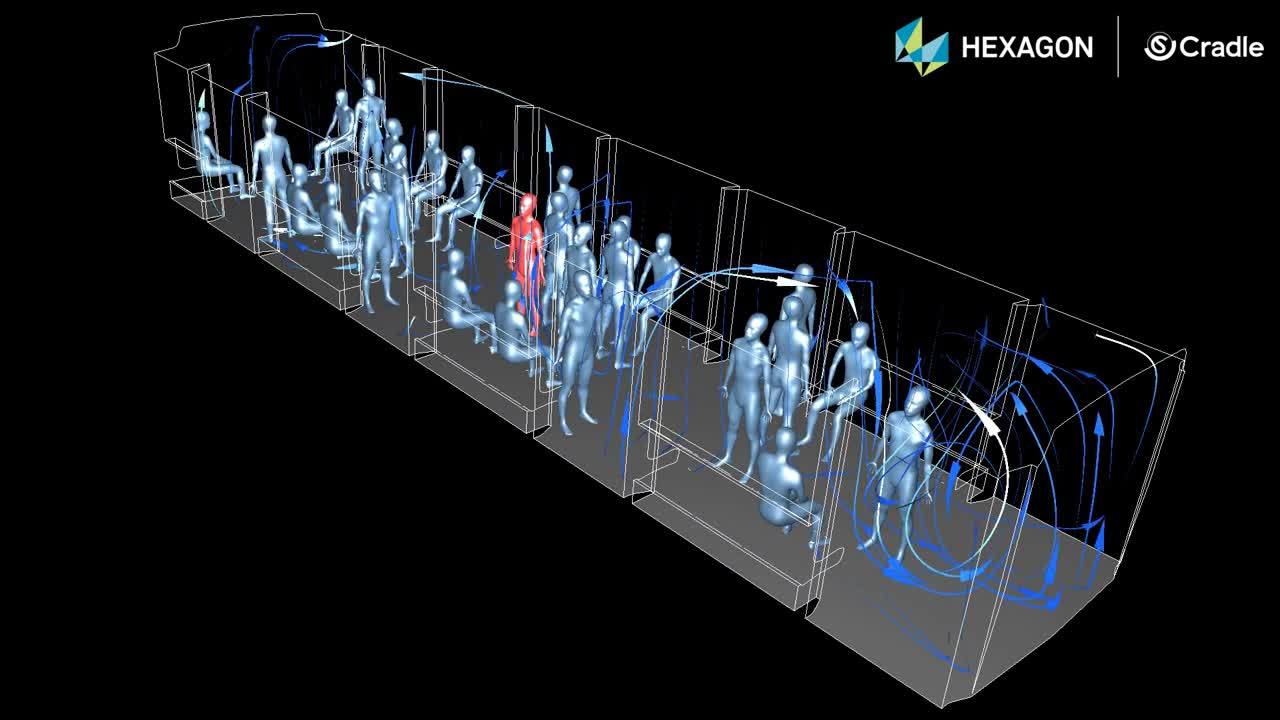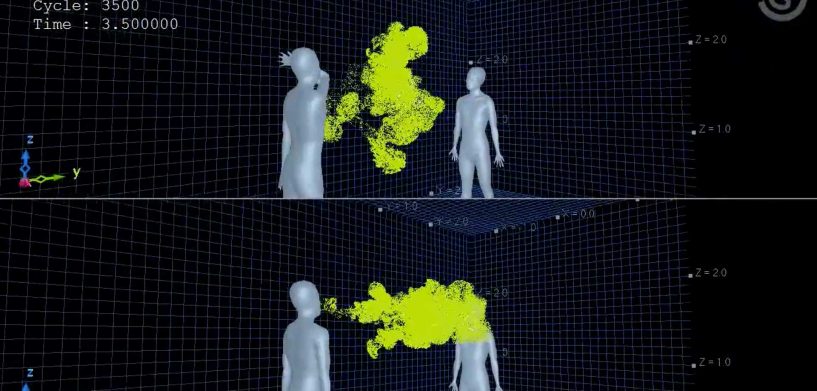EDITOR’S NOTE: This article was originally published on 20 April, and was updated to add a new video and additional reference links.
We’ve heard it from parents and grandparents for decades: “Cough and sneeze into your arm!” It’s time to put that advice into practice to help control the spread of COVID-19.
In response to the ongoing pandemic, a team at MSC Software, Hexagon’s computer-aided engineering (CAE) simulation specialist, has created a series of simulations that underscores guidance for social distancing and protective coverings.
The first video below used Cradle CFD software to run several analyses that illustrate how droplets and fluids spread when we sneeze. It simulates the reach distance of droplets when someone sneezes, comparing zero protection to sneezing into one’s elbow.
The simulation shows a sneeze into one’s arm keeps droplets from reaching a person two metres away, while zero protection hits a person farther out of range.

As guidance continues to evolve about the benefits of wearing masks in public — even simple, homemade, makeshift designs — the second simulation below shows the potential spread of sneeze droplets through a low-grade face mask. (*see further details on specifications at the end of this article)
This simulation shows droplets remaining very close to the body, going up into the air instead of directly at another person. Compared against the first simulation, reach distance is significantly minimised.

“Our aim was to visualise the impact of a mask,” said Virginie Turc, EMEA Cradle Business Development Manager, MSC Software.
As the COVID-19 crisis carries on, the MSC Software team has developed additional simulations to provide context for common, everyday scenarios. Governments around the world are attempting to address the challenge of getting people back to work safely, not to mention provide guidance around other social interactions to advise on a path toward “normalcy”. In response to these considerations, one simulation was created to show how breathing and talking in confined spaces — specifically a metro or train car — affects the spread of respiratory droplets. The third video below demonstrates the importance of face masks in such a scenario, taking into consideration people talking on a generic public transit car. This aims to replicate the physical behaviour of airborne droplets under realistic conditions.

“Simulations help us visualise and understand possible real-world scenarios,” Turc added. “We’re in a time of crisis, so we wanted to do everything we could with the tools at our disposal to show the effects of social distancing and protective wear. We hear so much about these measures, but rarely are able to see and experience tangible evidence.”
Thanks to simulations like these, it’s possible to demonstrate the importance of the barrier actions advocated by the government and the World Health Organization, said Thomas Acker, a safety coordinator with SNCF, France’s national state-owned railway company. In addition, it shows the importance of wearing a mask or visor in case of inability to respect these barrier gestures, and confirms that we are not being protected even by respecting bare-minimum social distancing recommendations.
“We have to implement protective measures for our operators. In order to resume activities during a pandemic period related to COVID-19, we need tangible support to raise awareness among managers and operators,” Acker noted.
This data raises awareness for those continuing to work in essential businesses, and it also highlights important social practices as lockdowns end and public life begins to reemerge across the world. Turns out those age-old public health habits are more than just courtesy.
To learn more about Hexagon’s support and response to the COVID-19 crisis, please visit hexagon.com.
—
*Note: To emphasise the impact of these mitigation measures, the mask in this simulation is just one millimetre (1mm) thick and made out of non-woven fabric. Like some of the masks on the market, it has gaps between the face and the mask of less than one centimetre (1cm), and here have been no filter or capture functionalities set for droplets on the mask. Droplets were simulated as so-called particles uniformly distributed of 1 µm diameter size.

















